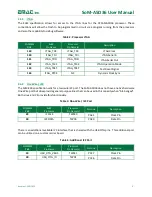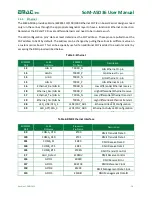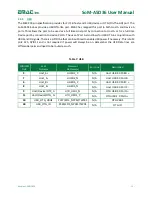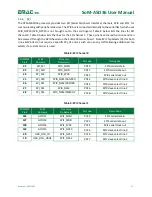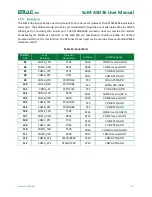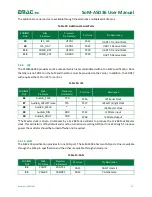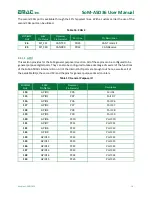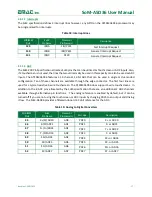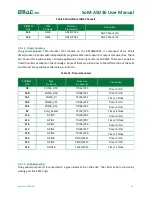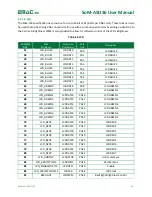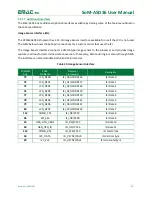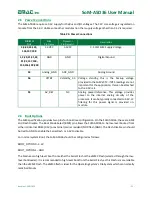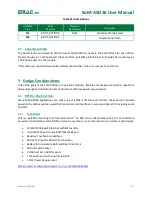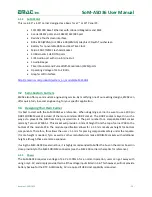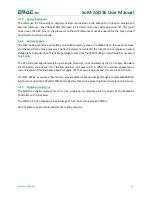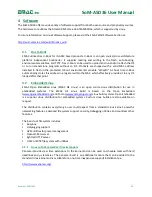
SoM-A5D36 User Manual
Revision 1.30 © 2015
- 23 -
3.1.2
SoM-250GS
This is a 6.55" x 4.15"
carrier designed as a basis for a 7” or 10” Panel PC.
•
10/100/1000 BaseT Ethernet with onboard Magnetics and RJ45
•
3 serial RS232 ports and 1 RS232/422/485 port
•
Resistive Touchscreen interface
•
800 x 480 (WVGA) or 1024 x 600 (WSVGA) Graphic LCD with Touchscreen
•
Battery for nonvolatile RAM and Real Time Clock
•
Micro SDHC/MMC Flash Card Socket
•
2 USB Host & 1 USB OTG ports
•
1 I2S Audio port with Line-In/Line-Out
•
1 Audio Beeper
•
Timer/Counters and Pulse Width Modulation (PWM) ports
•
Operating Voltage of 12 to 28 Vdc.
•
Graphic LCD Interface
http://emacinc.com/products/system_on_module/SoM-250GS
3.2
Semi-Custom Carriers
EMAC also offers a semi-custom engineering service. By modifying one of our existing designs, EMAC can
offer quick-turn, low-cost engineering, for your specific application.
3.3
Designing Your Own Carrier
It is best to start with the SoM-200GS as a reference. When designing a carrier be sure to use a 200 pin
DDR1 SODIMM socket instead of the more common DDR2 socket. The DDR2 socket is keyed in such a
way as to prevent the SoM from being inserted into it. The part number for a compatible DDR1 socket
made by Tyco is 1473005-1. This socket will provide 3.0 mm of height from the top of carrier PCB to the
bottom of the module PCB. The module specification allows for a 1.5 mm maximum height for bottom
components. Therefore, this allows the user < 1.5 mm for placing components safely under the module.
If more height is needed, Tyco as well as other manufacturers make SODIMM sockets with additional
height, although these are more expensive.
If using the SoM-
A5D36’s external bus, it is highly recommended to buffer the bus on the carrier board in
close proximity to the SoM SODIMM connector (see the SoM-200 carrier schematics for reference).
3.3.1
Power
The SoM-A5D36 requires a voltage of 3.3V at 300mA for a normal operation, users can get away with
using only 3.3V, and simply provide this to all the voltage inputs listed in 3.6. This however, will not provide
battery backup for the RTC. Additionally, 5V is required if USB Host capability is required.

